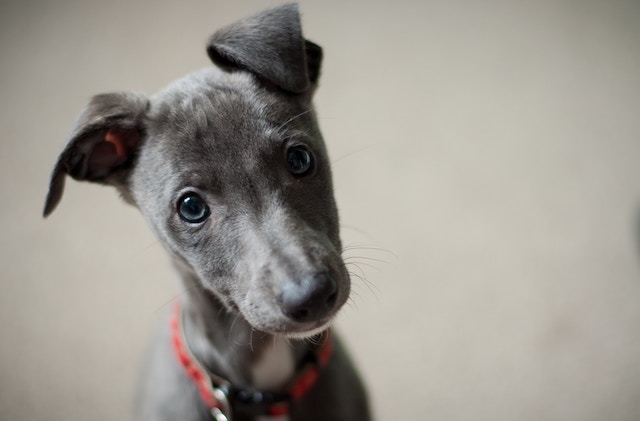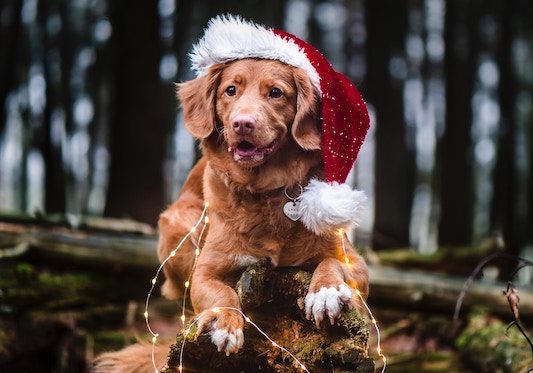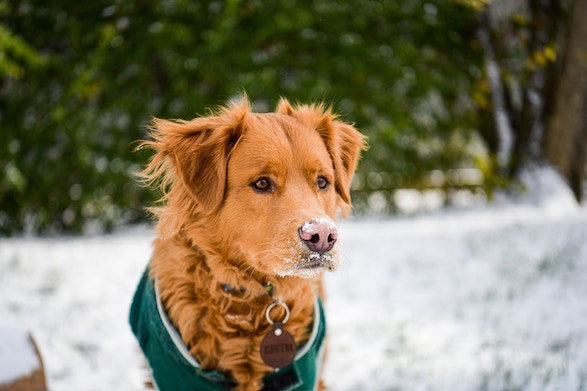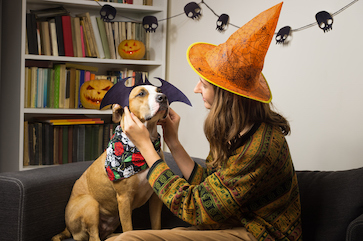
You just got home from an exhausting day of work and your hyper puppy is bouncing off the walls. All you want to do is make some dinner, wrap up some chores, and relax, but your puppy has other plans. Your puppy has the zoomies and goes from nipping at your ankles to grabbing your couch cushions to doing 100 laps around your living room all within the span of 5 seconds. You feel helpless and wonder if all puppies are like this or if you just have the most hyper puppy on the planet, incapable of calming down.
If this sounds familiar, don’t worry – you are not alone. We are here to help you guide your hyper puppy to find some zen. Puppy energy levels vary based on breed and personality and it’s important to understand the baseline of your puppy’s energy level. Dogs bred to work or to herd such as the Border Collie, Australian Shepherd, Australian Cattle Dog, and Belgian Malinois, are some of the most high-energy dogs perfect for people with super active lifestyles. On the other hand, dog breeds such as the Cavalier King Charles Spaniel, Pug, Pekingese, and English Bulldog, tend to be on the more chill side and are more suited for slower living. When you are first choosing what kind of puppy you want, it’s super important to consider your lifestyle and find a dog breed to match it. With that being said, here are 7 ways to calm a hyper puppy, regardless of dog breed.
7 Ways to Calm a Hyper Puppy
1.) Daily Exercise
Although we may all be sick and tired of everyone telling us the importance of daily exercise, it doesn’t make it any less true, even for our dogs. We recommend making sure your puppy gets AT LEAST 30 minutes of exercise per day. Exercise does not have to be a walk, although walks can be a great time for you to unwind and for your dog to enjoy the smells of the world. If your dog is reactive on walks and you don’t feel like going through the stress of worrying about your dog’s reaction towards everything they see, you don’t have to go on a walk. In fact, before our in-home dog training programs for leash reactivity, we actually recommend that your dog does not go on walks a couple of weeks prior to training so as to not worsen the reactivity.
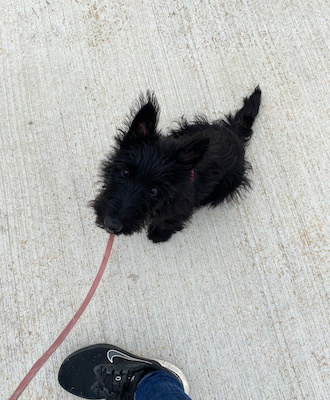
So, how can give your dog exercise without going on walks? Fetch is a great way to get your dog’s heart rate up, bond with you, and get some play time in at the same time. Not all dogs have an innate drive for fetch but every dog can learn to love the activity. Hide and seek incorporating recall and following exercises is another great way to burn some energy, train your dog’s following instinct and recall skills, and encourage play.
2.) Weekly Training Sessions
A little bit of training can go a long way. We recommend incorporating short 5-15-minute training sessions with your puppy a few times per week. However, the exact amount of time you should spend training your puppy varies on their age and your training goals. Our training sessions are typically for 60 minutes and cover 5-10 different commands and behaviors, but you certainly don’t need to do that every day. Just a little bit of training each day or every couple of days gives your dog mental and physical stimulation at the same time, strengthens your bond, and helps your puppy understand what is expected of them within your household. For example, if your puppy struggles the most with jumping and play biting, it’s totally worth it to do just a few minutes of auto-sit training every day to get your puppy working for your attention. Sometimes your puppy has a ton of energy simply because they are bored. Training is the perfect way to cure this boredom and might even be your puppy’s favorite moment of the day!
3.) Make the Most out of Mealtimes
Ditch the traditional food bowl and get your puppy working for their meals, either with you or without you. You can use a puppy’s entire meal for a training session like practicing place, leash walking, or any other series of commands of your choosing. If you want your puppy’s mealtime to be at the same time as your own, feed your puppy’s meal out of a food-dispensing toy and make their mealtime last as long as yours does. Some of our favorites include using water to make a paste out of kibble, freezing it, and stuffing it into a Kong, feeding meals from the Starmark Bob-A-Lot, and freezing slow feeders. Freezing your puppy’s food does take additional planning but it pays off when your puppy is entertained without you having to do anything for up to an hour!
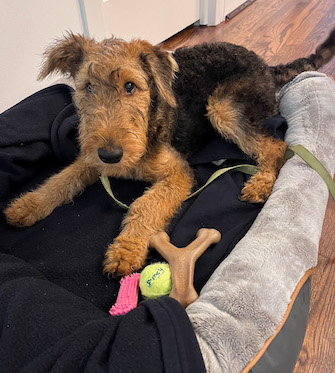
4.) 24/7 Access to Mentally Stimulating Toys
We recommend having 8-12 appropriate toys out for your puppy at all times. By appropriate toys, we mean indestructible toys that do not resemble your furniture (no plush or rope toys!). We don’t want your puppy to confuse a curtain tassel with a rope toy, so we make the distinction very clear as to what is a toy and what is not. You can find all of our favorite puppy toys on our Amazon Storefront, as well as all of our recommended puppy supplies. Some of our favorites include Kong toys, Nylabones, and cow bones. Lick mats and puzzle feeders can be very entertaining for some puppies as well.
5.) Explore Kansas City Together
Check out our Kansas City Dog-Friendly Guide for some inspiration on where to go on your next adventure with your dog. Playing a few rounds of fetch and then embarking on an adventure might be the way to go if your dog is known to get even more hyper around other people and dogs. Practice generalizing your dog’s obedience in one of Kansas City’s many dog-friendly stores, practice loose leash-walking on a hike, or let loose at a Kansas City park.
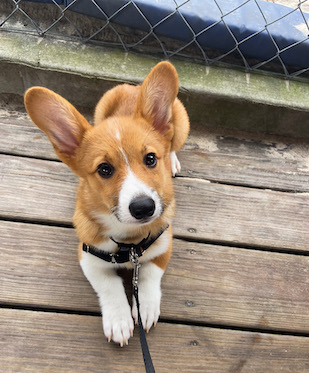
6.) Stick to a Routine
Just like us humans, dogs love consistency and knowing what to expect throughout their days. You might notice if you typically feed your dog every day at 6:30 pm and 7:00 pm rolls around they start to give you a look, maybe some barks, or maybe they start pawing at their food bowl. Even though dogs can’t tell the time using clocks made for humans, they have their own internal clocks that tell them when to expect dinner. Incorporating exercise, training sessions, and frozen enrichment toys into your dog’s daily routine will help you become a master of managing your dog’s energy and give them some peace of mind.

7.) Consider Hiring Help
Most puppies do not need daycare, however, if you implement the tips above into your routine and you still do not notice a significant difference in your puppy’s energy level, daycare might be a good option for your puppy. If your job or lifestyle doesn’t allow you to have a consistent exercise or training routine for your puppy, you could also consider hiring a dog walker or an in-home dog trainer to make your life easier. Let the professionals do the heavy lifting for you and reap the benefits of a tired, satisfied pup.
We hope these tips help you create a routine to help you calm your hyper puppy. If you want daily mental and physical stimulation for your puppy, consider enrolling in an in-home puppy training program with us! We’ll help you accomplish all of your puppy training goals and help you create routines to live your best life with your puppy. Schedule a free consultation with our Co-Founder Sean Savage today and he’ll give you a personalized training recommendation based on your specific puppy training goals.
*This page contains affiliate links. If you choose to purchase after clicking a link, we may receive a commission at no extra cost to you.*
